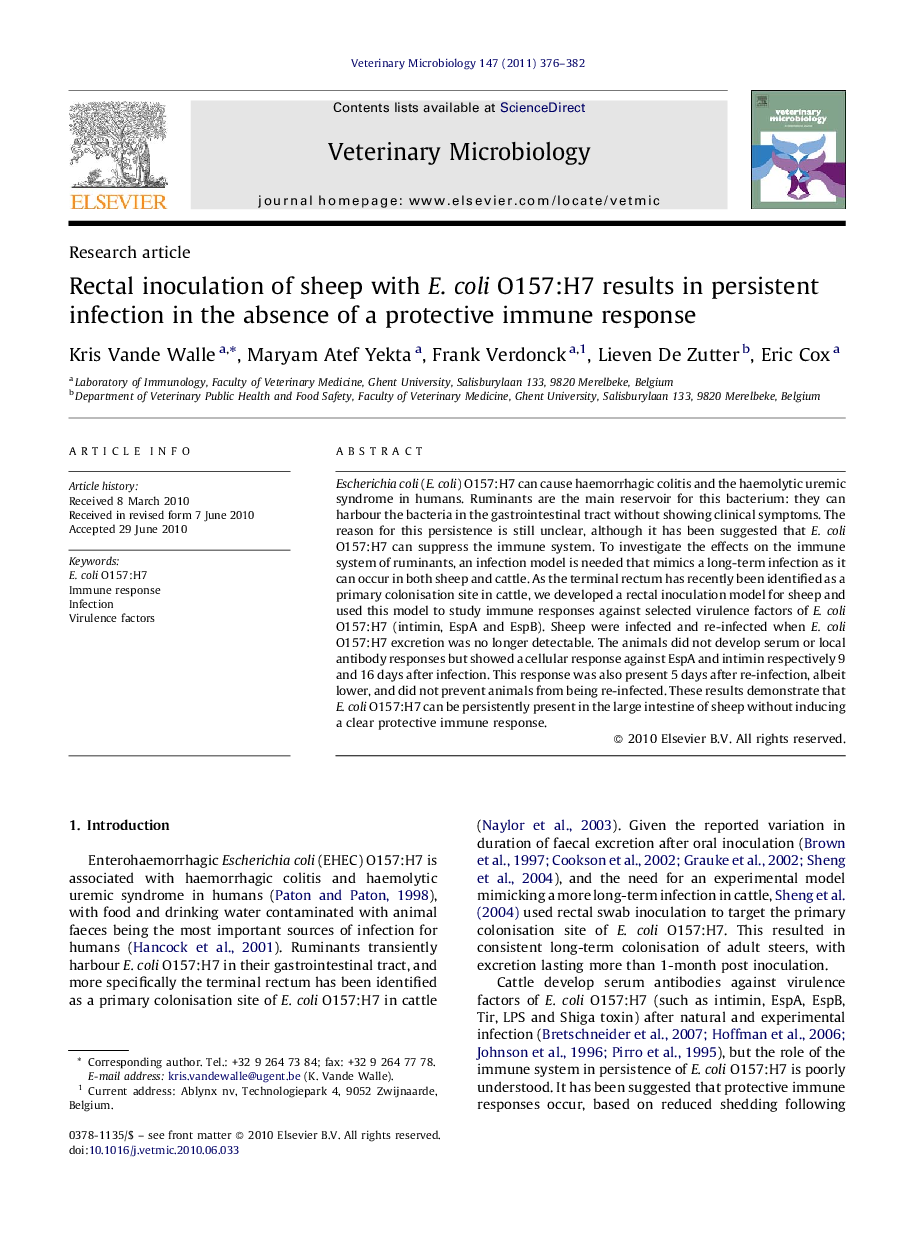| کد مقاله | کد نشریه | سال انتشار | مقاله انگلیسی | نسخه تمام متن |
|---|---|---|---|---|
| 2467786 | 1555405 | 2011 | 7 صفحه PDF | دانلود رایگان |

Escherichia coli (E. coli) O157:H7 can cause haemorrhagic colitis and the haemolytic uremic syndrome in humans. Ruminants are the main reservoir for this bacterium: they can harbour the bacteria in the gastrointestinal tract without showing clinical symptoms. The reason for this persistence is still unclear, although it has been suggested that E. coli O157:H7 can suppress the immune system. To investigate the effects on the immune system of ruminants, an infection model is needed that mimics a long-term infection as it can occur in both sheep and cattle. As the terminal rectum has recently been identified as a primary colonisation site in cattle, we developed a rectal inoculation model for sheep and used this model to study immune responses against selected virulence factors of E. coli O157:H7 (intimin, EspA and EspB). Sheep were infected and re-infected when E. coli O157:H7 excretion was no longer detectable. The animals did not develop serum or local antibody responses but showed a cellular response against EspA and intimin respectively 9 and 16 days after infection. This response was also present 5 days after re-infection, albeit lower, and did not prevent animals from being re-infected. These results demonstrate that E. coli O157:H7 can be persistently present in the large intestine of sheep without inducing a clear protective immune response.
Journal: Veterinary Microbiology - Volume 147, Issues 3–4, 27 January 2011, Pages 376–382